The city and the city
I’ve lived in Baltimore for 13 years and, prior to December of 2022, had barely seen any of it.
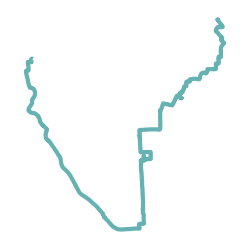 Jan 01: Wandering commute with two kid... (1.0 new km)
Jan 01: Wandering commute with two kid... (1.0 new km)
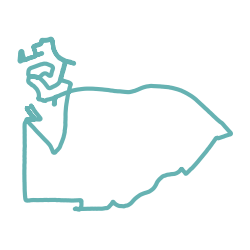 Jan 01: Joy ride (2.8 new km)
Jan 01: Joy ride (2.8 new km)
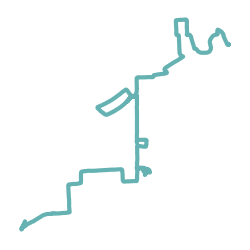 Jan 02: Roundabout way home (1.2 new km)
Jan 02: Roundabout way home (1.2 new km)
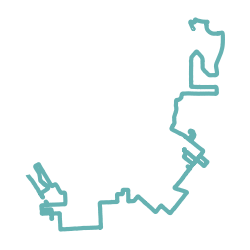 Jan 04: Ride home (5.8 new km)
Jan 04: Ride home (5.8 new km)
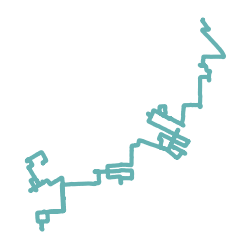 Jan 05: Morning Ride (5.2 new km)
Jan 05: Morning Ride (5.2 new km)
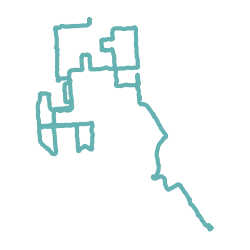 Jan 05: Afternoon Ride (1.5 new km)
Jan 05: Afternoon Ride (1.5 new km)
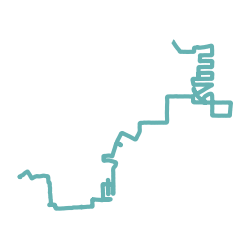 Jan 06: Morning Ride (4.8 new km)
Jan 06: Morning Ride (4.8 new km)
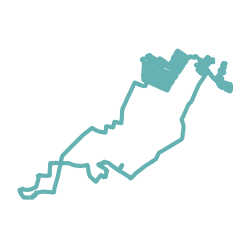 Jan 07: Morning wander (27.7 new km)
Jan 07: Morning wander (27.7 new km)
 Jan 08: Morning Ride (1.0 new km)
Jan 08: Morning Ride (1.0 new km)
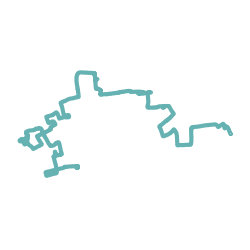 Jan 08: Lunch Ride (5.5 new km)
Jan 08: Lunch Ride (5.5 new km)
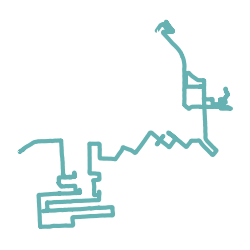 Jan 09: Morning Ride (8.0 new km)
Jan 09: Morning Ride (8.0 new km)
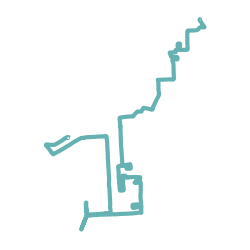 Jan 09: Afternoon Ride (3.6 new km)
Jan 09: Afternoon Ride (3.6 new km)
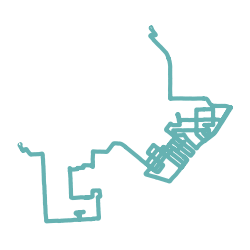 Jan 10: Morning Ride (11.5 new km)
Jan 10: Morning Ride (11.5 new km)
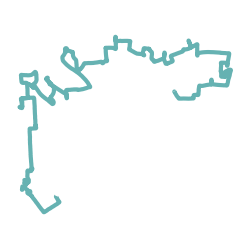 Jan 10: Errand and ride home (6.9 new km)
Jan 10: Errand and ride home (6.9 new km)
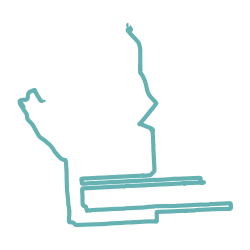 Jan 11: That's it? (19.2 new km)
Jan 11: That's it? (19.2 new km)
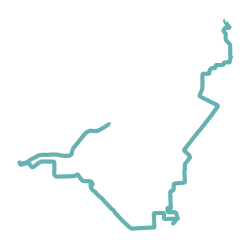 Jan 11: Afternoon Ride (6.4 new km)
Jan 11: Afternoon Ride (6.4 new km)
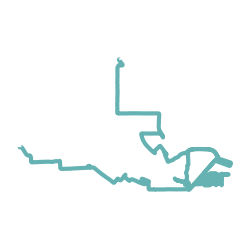 Jan 12: Morning Ride (10.3 new km)
Jan 12: Morning Ride (10.3 new km)
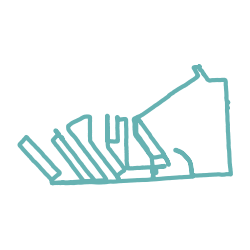 Jan 12: Afternoon Ride (11.7 new km)
Jan 12: Afternoon Ride (11.7 new km)
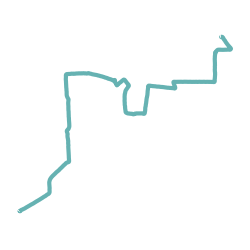 Jan 13: Lunch Ride (1.0 new km)
Jan 13: Lunch Ride (1.0 new km)
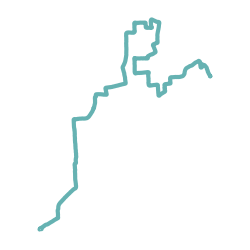 Jan 13: Afternoon Ride (1.7 new km)
Jan 13: Afternoon Ride (1.7 new km)
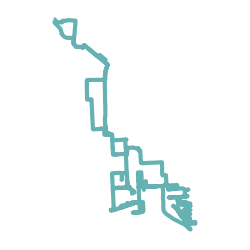 Jan 14: SE Baltimore: the ports (44.3 new km)
Jan 14: SE Baltimore: the ports (44.3 new km)
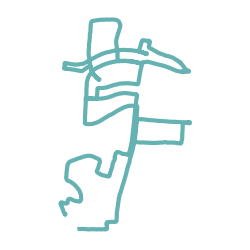 Jan 15: Afternoon ride with #1 (5.9 new km)
Jan 15: Afternoon ride with #1 (5.9 new km)
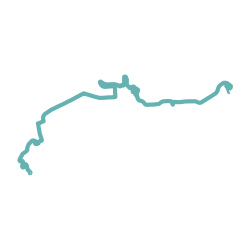 Jan 16: Ride to the zoo (2.7 new km)
Jan 16: Ride to the zoo (2.7 new km)
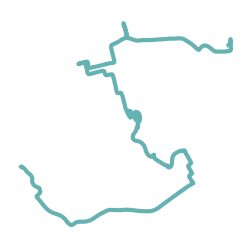 Jan 16: To the dentist (4.0 new km)
Jan 16: To the dentist (4.0 new km)
We moved here in 2010 with two kids already and celebrated the move with another one a few years after. The kids brought us all over the place and naturally determined many of our destinations. Outdoors, this included local playgrounds and well-known sites like the zoo, Cylburn Arboretum, and Sherwood Garden; indoors, we frequented downtown destinations like the Walters Art Museum. These are all places that give to people of every age, whose beauty and appeal grows with exposure and one’s changing perspective. There are also many destinations that in our experience were more time-bound or whose appeal wanes across visits (whether universally or just for us): Port Discovery, the science center, and the National Aquarium. Apart from the kids, recommendations and events with friends from work, church, and our neighborhood brought us to restaurants and a handful of other places across the city. Live in a place long enough, and you’ll have visited or intentionally passed over most of the places you’d find on a “What to do in X” list for your city, and collected enough second-tier, off-list places to feel reasonably at-home.
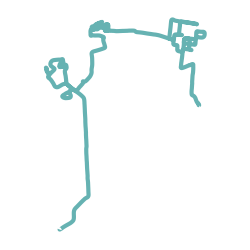 Jan 17: Cleanup commute (5.2 new km)
Jan 17: Cleanup commute (5.2 new km)
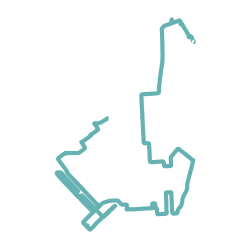 Jan 17: Afternoon Ride (12.4 new km)
Jan 17: Afternoon Ride (12.4 new km)
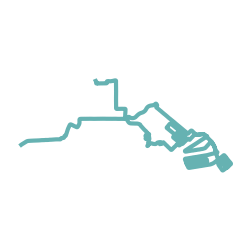 Jan 18: Morning Wandr (12.8 new km)
Jan 18: Morning Wandr (12.8 new km)
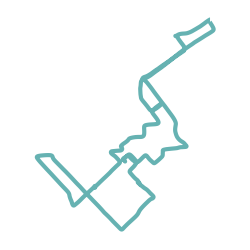 Jan 18: Quick ride (4.7 new km)
Jan 18: Quick ride (4.7 new km)
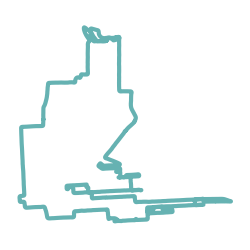 Jan 19: Aborted commute (12.5 new km)
Jan 19: Aborted commute (12.5 new km)
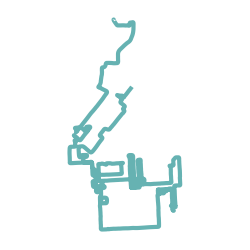 Jan 20: Morning Ride (15.5 new km)
Jan 20: Morning Ride (15.5 new km)
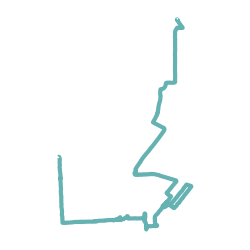 Jan 20: Ride home (1.7 new km)
Jan 20: Ride home (1.7 new km)
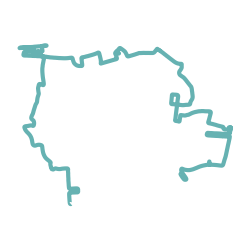 Jan 21: Morning Ride (9.8 new km)
Jan 21: Morning Ride (9.8 new km)
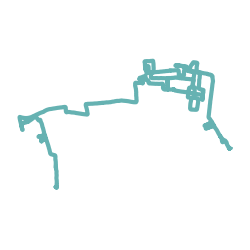 Jan 21: Afternoon Ride (6.1 new km)
Jan 21: Afternoon Ride (6.1 new km)
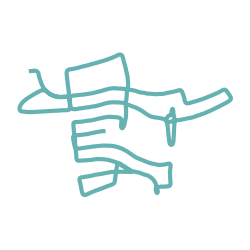 Jan 21: Missing ride segment (6.2 new km)
Jan 21: Missing ride segment (6.2 new km)
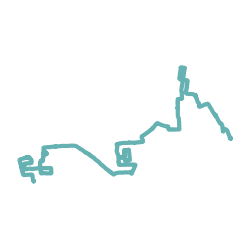 Jan 22: Lunch Ride (2.0 new km)
Jan 22: Lunch Ride (2.0 new km)
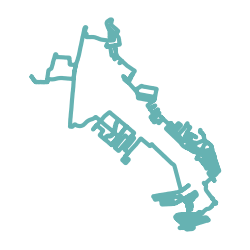 Jan 30: Back out there (32.3 new km)
Jan 30: Back out there (32.3 new km)
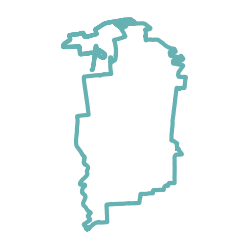 Feb 01: Home for lunch and back the lo... (6.1 new km)
Feb 01: Home for lunch and back the lo... (6.1 new km)
 Feb 01: Night Ride (5.7 new km)
Feb 01: Night Ride (5.7 new km)
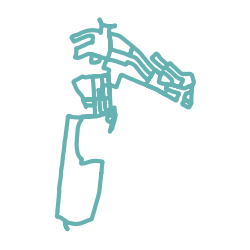 Feb 02: Morning ride (17.0 new km)
Feb 02: Morning ride (17.0 new km)
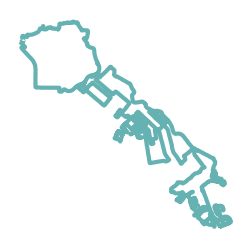 Feb 06: In which I ford a river (18.1 new km)
Feb 06: In which I ford a river (18.1 new km)
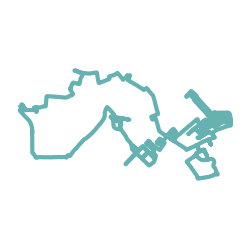 Feb 08: Morning Ride (21.1 new km)
Feb 08: Morning Ride (21.1 new km)
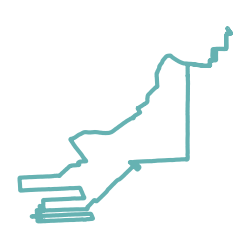 Feb 09: You should see the other guy! (10.9 new km)
Feb 09: You should see the other guy! (10.9 new km)
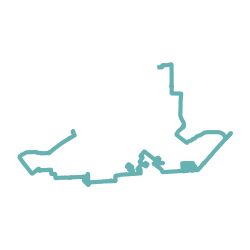 Feb 10: Morning Ride (5.2 new km)
Feb 10: Morning Ride (5.2 new km)
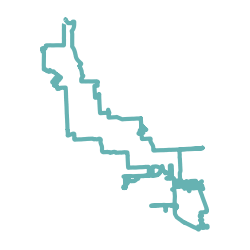 Feb 11: Man I love this (36.0 new km)
Feb 11: Man I love this (36.0 new km)
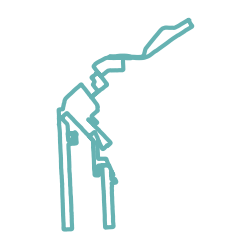 Feb 14: That was weird (10.8 new km)
Feb 14: That was weird (10.8 new km)
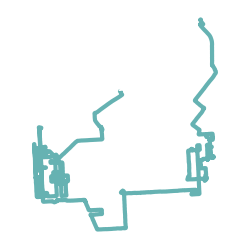 Feb 15: Some of the best street art ye... (23.2 new km)
Feb 15: Some of the best street art ye... (23.2 new km)
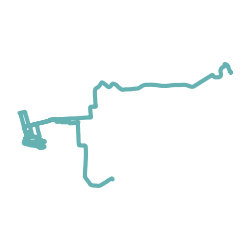 Feb 16: Home from work with stops (2.3 new km)
Feb 16: Home from work with stops (2.3 new km)
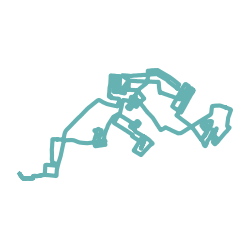 Feb 17: 30.33% of Baltimore! (28.1 new km)
Feb 17: 30.33% of Baltimore! (28.1 new km)
But your own particular collection is, inevitably, a small part only of any city. You will not come to know the whole of it by ordinary routine. What strikes me in thinking over the complete geographic area is how foreign parts of it can feel, and continue to feel, well after we’d established ourselves here. There were many places I visited that even gave me a kind of low-grade anxiety and discomfort. Sometimes this was because an area was ugly or run-down; the MVA in Reisterstown sits in my mind as one of these places, a building next to a large ugly parking lot on a treeless strip of one of the city’s many stroads. But the discomfort doesn’t come only from ugliness or decay; it comes also from mere unfamiliarity. Good friends of ours once lived in Woodlawn, on the far SW side of the city, and our drives there would take us through Gwynn Falls and Liberty Heights, whole areas that felt unfriendly and unpleasant and vaguely dangerous. We met once for a picnic at a playground in Leakin Park, and I remember thinking or maybe just feeling, can you really have a playground here? Of course, they didn’t share my private feelings about these places, which they knew well. The main difference is that it was new to me.
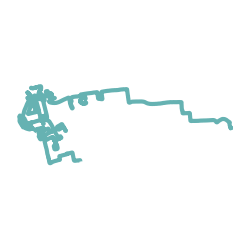 Feb 22: Night Ride (8.6 new km)
Feb 22: Night Ride (8.6 new km)
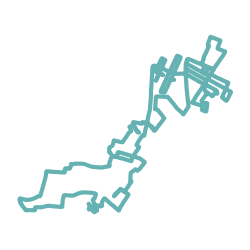 Feb 23: Morning ride (18.3 new km)
Feb 23: Morning ride (18.3 new km)
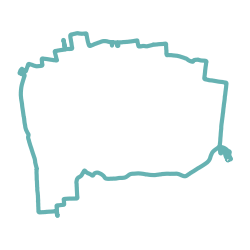 Feb 23: Date / Dinner / Home (2.1 new km)
Feb 23: Date / Dinner / Home (2.1 new km)
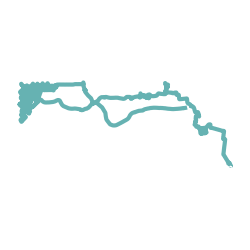 Feb 25: NW corner (32.0 new km)
Feb 25: NW corner (32.0 new km)
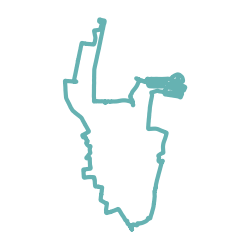 Feb 26: Daughter to youth group and wa... (11.6 new km)
Feb 26: Daughter to youth group and wa... (11.6 new km)
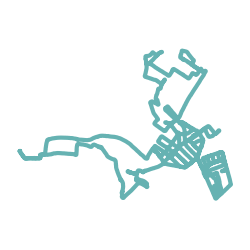 Feb 28: Afternoon Ride (14.8 new km)
Feb 28: Afternoon Ride (14.8 new km)
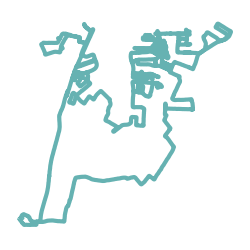 Mar 02: Morning ride (22.0 new km)
Mar 02: Morning ride (22.0 new km)
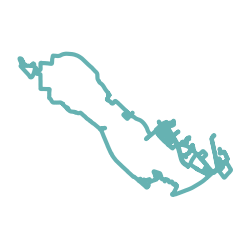 Mar 10: Thirty-five per cent (23.2 new km)
Mar 10: Thirty-five per cent (23.2 new km)
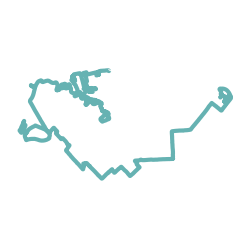 Mar 12: Tennis with #1 (13.6 new km)
Mar 12: Tennis with #1 (13.6 new km)
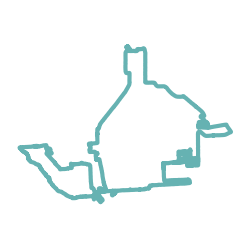 Mar 14: Morning Ride (16.4 new km)
Mar 14: Morning Ride (16.4 new km)
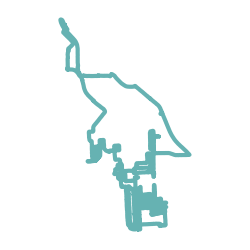 Mar 16: Morning Ride (19.5 new km)
Mar 16: Morning Ride (19.5 new km)
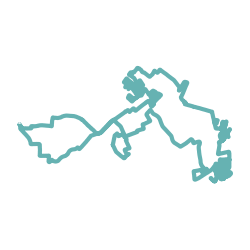 Mar 17: Afternoon Ride (20.8 new km)
Mar 17: Afternoon Ride (20.8 new km)
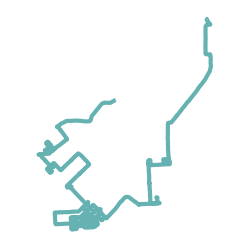 Mar 20: Afternoon Ride (11.8 new km)
Mar 20: Afternoon Ride (11.8 new km)
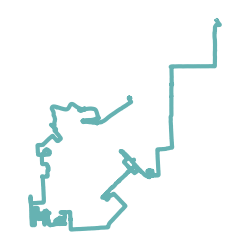 Mar 21: roundabout commute with a flat (10.8 new km)
Mar 21: roundabout commute with a flat (10.8 new km)
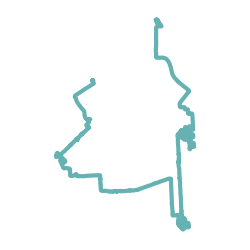 Mar 23: the “harbor route” to work (15.2 new km)
Mar 23: the “harbor route” to work (15.2 new km)
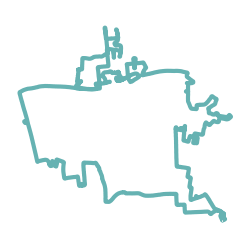 Mar 26: Afternoon Ride (11.3 new km)
Mar 26: Afternoon Ride (11.3 new km)
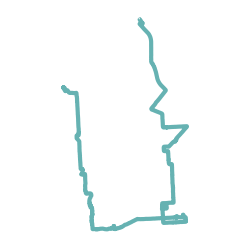 Mar 27: I hate rain... (7.6 new km)
Mar 27: I hate rain... (7.6 new km)
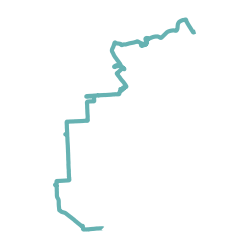 Mar 27: really bummed that strava... (5.0 new km)
Mar 27: really bummed that strava... (5.0 new km)
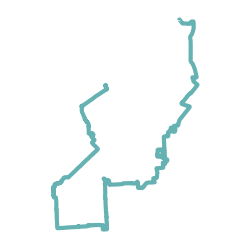 Mar 28: redo (8.2 new km)
Mar 28: redo (8.2 new km)
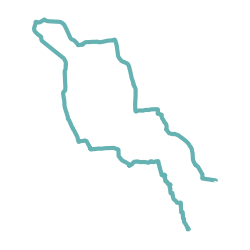 Mar 31: two views on a squeeze (36.5 new km)
Mar 31: two views on a squeeze (36.5 new km)
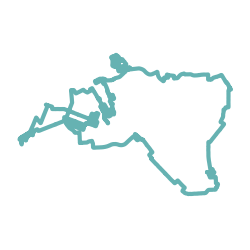 Apr 03: Midday ride (39.7 new km)
Apr 03: Midday ride (39.7 new km)
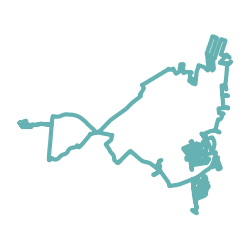 Apr 04: Riding in the spring heat (26.4 new km)
Apr 04: Riding in the spring heat (26.4 new km)
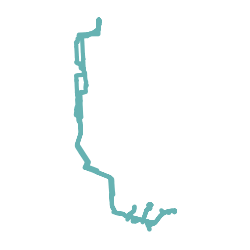 Apr 05: Southernmost point (36.0 new km)
Apr 05: Southernmost point (36.0 new km)
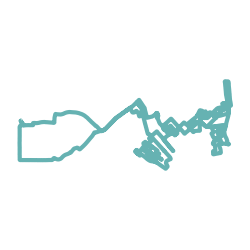 Apr 07: Crossed the 45% threshold (18.1 new km)
Apr 07: Crossed the 45% threshold (18.1 new km)
Experiences like these have something to say about the granularity of familiarity. The city contains places I know well and love, and unpleasant places, and places I’ve never been to. Yet all are gathered together under a single name, Baltimore. It is both the name of the city I live in, and the name of the tiny portion of the city I know. And that tiny portion is inevitably limited, confined to the overlapping circles of the must-see, personal recommendations, and happenstance. How much of Baltimore was I missing from this limited view?
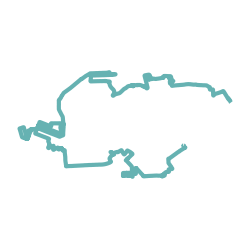 Apr 10: long ride to work (24.2 new km)
Apr 10: long ride to work (24.2 new km)
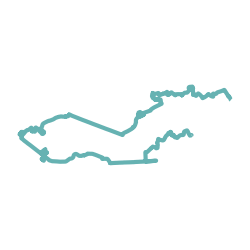 Apr 14: Morning Ride (19.7 new km)
Apr 14: Morning Ride (19.7 new km)
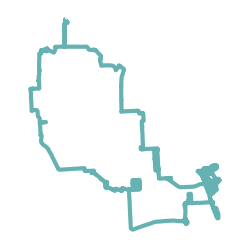 Apr 15: harbor views (27.3 new km)
Apr 15: harbor views (27.3 new km)
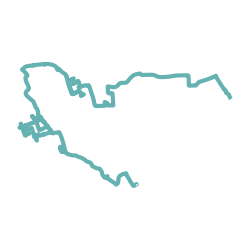 Apr 18: pollen in my eyes (3.8 new km)
Apr 18: pollen in my eyes (3.8 new km)
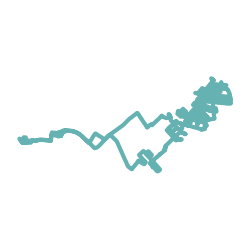 Apr 18: baseball ride (19.3 new km)
Apr 18: baseball ride (19.3 new km)
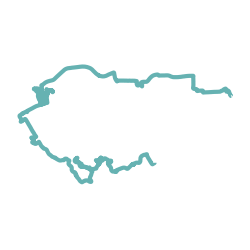 Apr 19: park discursion (7.4 new km)
Apr 19: park discursion (7.4 new km)
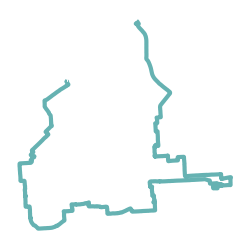 Apr 20: quick ride with another flat (12.7 new km)
Apr 20: quick ride with another flat (12.7 new km)
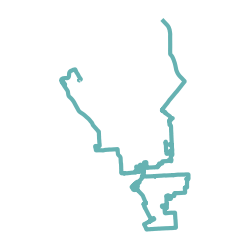 Apr 21: happy hour (8.7 new km)
Apr 21: happy hour (8.7 new km)
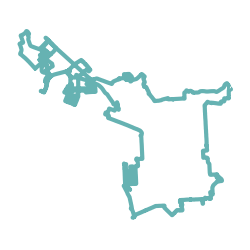 Apr 23: glorious ride that filled me w... (60.6 new km)
Apr 23: glorious ride that filled me w... (60.6 new km)
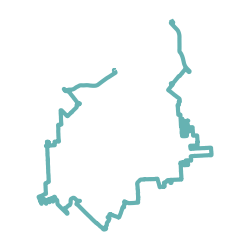 Apr 25: long ride in (16.4 new km)
Apr 25: long ride in (16.4 new km)
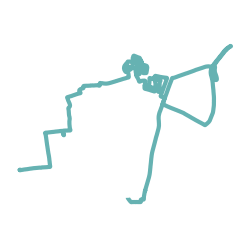 Apr 28: 10 miles in the cold cold rain (9.2 new km)
Apr 28: 10 miles in the cold cold rain (9.2 new km)
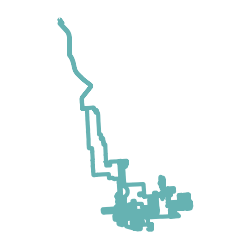 Apr 29: First place! (33.6 new km)
Apr 29: First place! (33.6 new km)
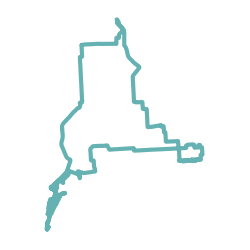 May 13: Morning ride (22.6 new km)
May 13: Morning ride (22.6 new km)
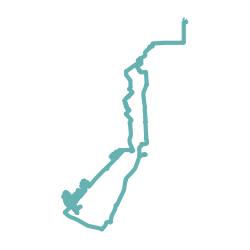 May 15: More SW Baltimore (23.1 new km)
May 15: More SW Baltimore (23.1 new km)
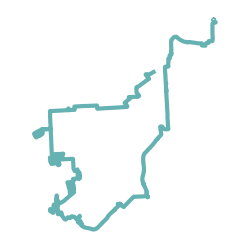 May 17: Pedestrian bridges! A tunnel! ... (18.6 new km)
May 17: Pedestrian bridges! A tunnel! ... (18.6 new km)
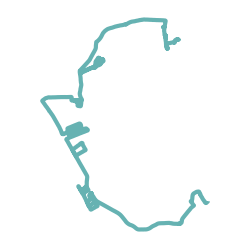 May 18: Roundabout way to a baseball g... (12.8 new km)
May 18: Roundabout way to a baseball g... (12.8 new km)
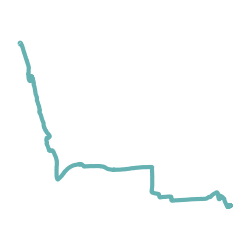 May 18: Evening Ride (1.2 new km)
May 18: Evening Ride (1.2 new km)
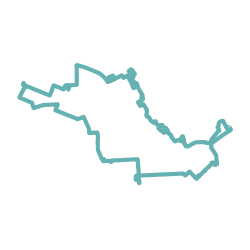 May 19: Afternoon Ride (18.1 new km)
May 19: Afternoon Ride (18.1 new km)
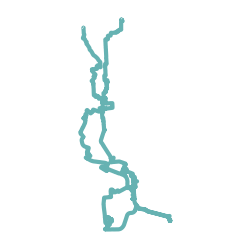 May 21: A little bit of everything (35.7 new km)
May 21: A little bit of everything (35.7 new km)
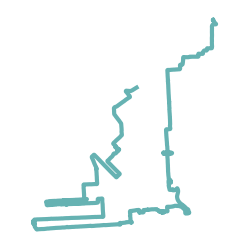 May 24: Afternoon Ride (12.5 new km)
May 24: Afternoon Ride (12.5 new km)
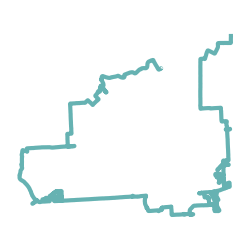 May 25: morning ride in glorious may w... (16.8 new km)
May 25: morning ride in glorious may w... (16.8 new km)
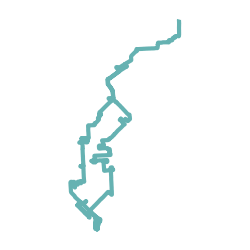 Jun 02: Secret highway skate park (12.0 new km)
Jun 02: Secret highway skate park (12.0 new km)
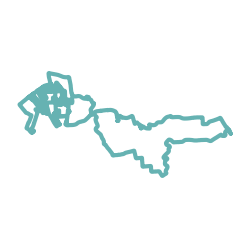 Jun 03: Flat #6 and a little (offered)... (17.2 new km)
Jun 03: Flat #6 and a little (offered)... (17.2 new km)
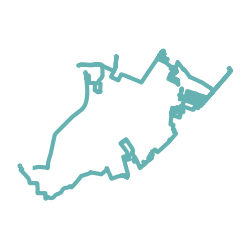 Jun 05: Flat #7 and a little help from... (16.9 new km)
Jun 05: Flat #7 and a little help from... (16.9 new km)
This is all written after the fact, but these are the kinds of thoughts that were in my head when I first came across wandrer.earth. The site’s mission is to “encourage you to take a small action against going where you’d normally go”, which it does by pulling your cycling rides from Strava and visualizing and quantifying how many unique miles of an area’s streets you’ve traveled. A natural goal is to visit them all. I must have come across it on Twitter, since two people I follow had both done it: one, a Baltimore city councilman, and the other, a guy from St. Louis. The project immediately appealed to me. What better way to close the gap between the city and the city? Its answer to the question of how to break out of ruts is “systematic exploration”.
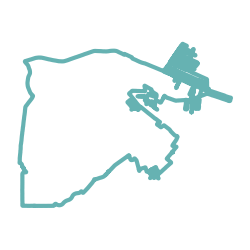 Jun 29: going after the NE (23.5 new km)
Jun 29: going after the NE (23.5 new km)
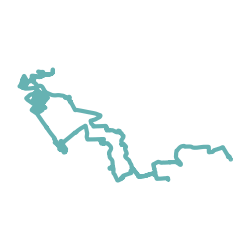 Jul 01: Morning Ride (18.5 new km)
Jul 01: Morning Ride (18.5 new km)
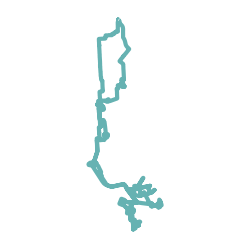 Jul 03: South Baltimore = 64.84% (31.6 new km)
Jul 03: South Baltimore = 64.84% (31.6 new km)
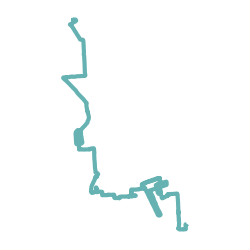 Jul 05: Morning Ride (4.8 new km)
Jul 05: Morning Ride (4.8 new km)
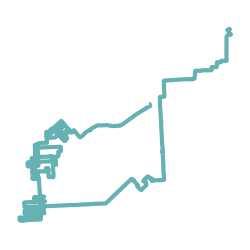 Jul 05: Wrong way commute (12.0 new km)
Jul 05: Wrong way commute (12.0 new km)
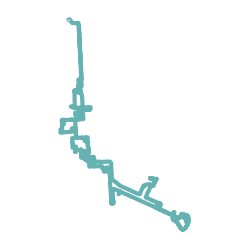 Jul 07: Locust Point (17.1 new km)
Jul 07: Locust Point (17.1 new km)
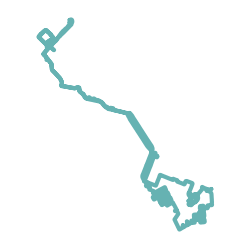 Jul 15: Cheating my way to 66.77% (16.8 new km)
Jul 15: Cheating my way to 66.77% (16.8 new km)
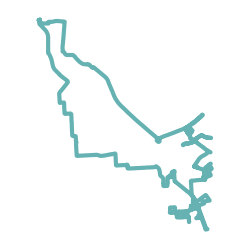 Jul 17: Unpleasant ride (21.7 new km)
Jul 17: Unpleasant ride (21.7 new km)
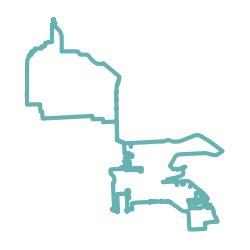 Jul 20: Afternoon Ride (16.8 new km)
Jul 20: Afternoon Ride (16.8 new km)
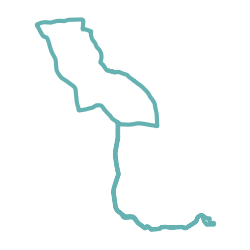 Jul 30: Fantastic ride (3.5 new km)
Jul 30: Fantastic ride (3.5 new km)
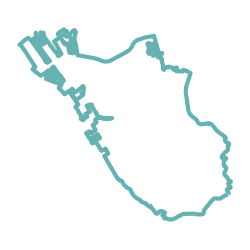 Aug 02: horsing around to 69% (19.3 new km)
Aug 02: horsing around to 69% (19.3 new km)
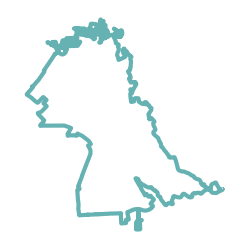 Aug 08: North side ride (26.1 new km)
Aug 08: North side ride (26.1 new km)
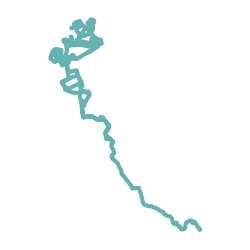 Aug 11: (not) consorting with horserac... (11.2 new km)
Aug 11: (not) consorting with horserac... (11.2 new km)
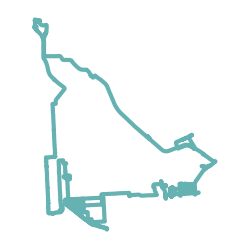 Aug 12: Kid dropoff and wandr (24.1 new km)
Aug 12: Kid dropoff and wandr (24.1 new km)
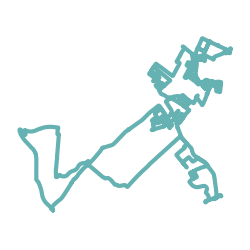 Aug 14: The NE (11.9 new km)
Aug 14: The NE (11.9 new km)
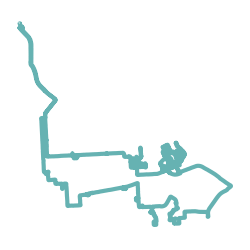 Aug 19: SE Baltimore, why can’t I quit... (13.0 new km)
Aug 19: SE Baltimore, why can’t I quit... (13.0 new km)
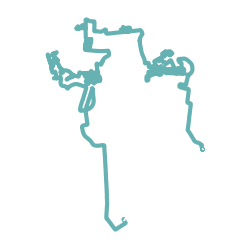 Aug 25: paths, hidden and blocked (11.0 new km)
Aug 25: paths, hidden and blocked (11.0 new km)
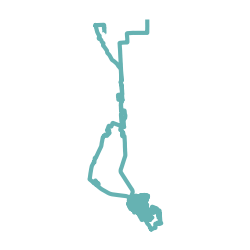 Aug 26: Finishing off Brooklyn and sou... (30.0 new km)
Aug 26: Finishing off Brooklyn and sou... (30.0 new km)
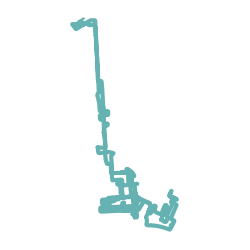 Sep 15: Locust point (14.5 new km)
Sep 15: Locust point (14.5 new km)
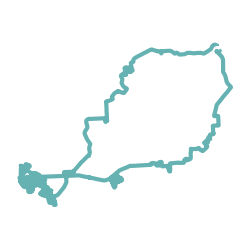 Sep 16: The first 75% was the easiest (35.9 new km)
Sep 16: The first 75% was the easiest (35.9 new km)
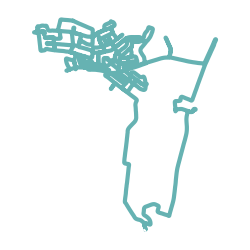 Sep 21: City north (18.4 new km)
Sep 21: City north (18.4 new km)
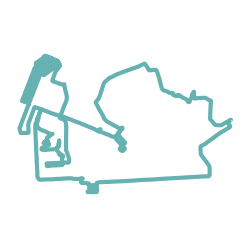 Sep 22: The red lines are killing me (16.8 new km)
Sep 22: The red lines are killing me (16.8 new km)
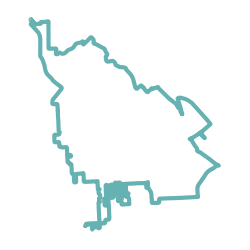 Sep 25: A lot of riding old roads (9.5 new km)
Sep 25: A lot of riding old roads (9.5 new km)
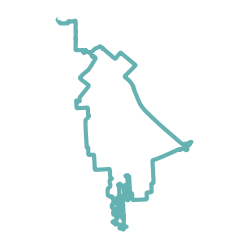 Sep 26: will someone rid me of this me... (6.7 new km)
Sep 26: will someone rid me of this me... (6.7 new km)
So in December of 2022 I started fiddling with the idea. And over Christmas at my in-laws I subscribed to Wandrer (it’s cheap, $30 / year), and then walked into a bike store in a St. Louis suburb and bought a low-end quality road bike. I told the guy who was helping me what I was planning to do and he told me, “Oh, I’ve done that!” It turns out I was talking to the most-traveled guy in St. Louis, who’d literally ridden every street. Small world, and surely a sign that I was on the right path.
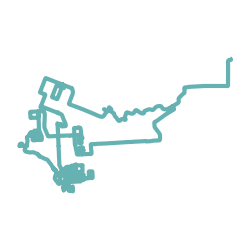 Sep 29: Creepy city park (24.2 new km)
Sep 29: Creepy city park (24.2 new km)
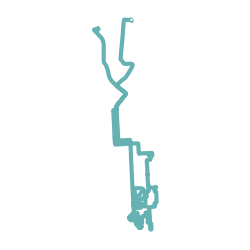 Oct 03: once more to Patterson Park (5.5 new km)
Oct 03: once more to Patterson Park (5.5 new km)
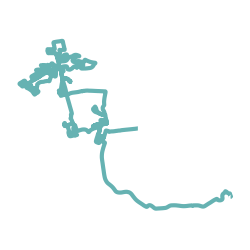 Oct 07: Northern hills (9.5 new km)
Oct 07: Northern hills (9.5 new km)
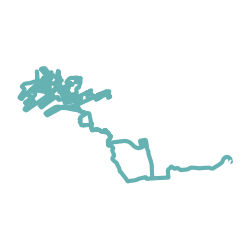 Oct 08: Lunch Ride (21.3 new km)
Oct 08: Lunch Ride (21.3 new km)
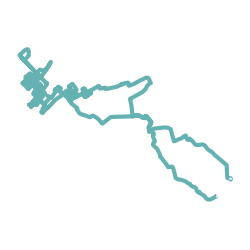 Oct 10: Gear cable snapped (16.0 new km)
Oct 10: Gear cable snapped (16.0 new km)
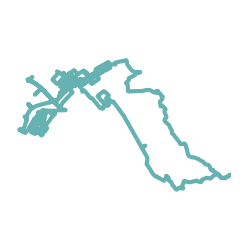 Oct 12: Territorial conquests (28.4 new km)
Oct 12: Territorial conquests (28.4 new km)
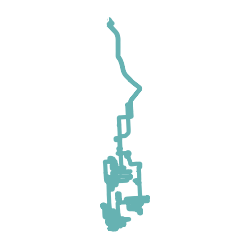 Oct 13: Harbor Place (14.0 new km)
Oct 13: Harbor Place (14.0 new km)
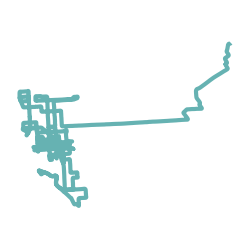 Oct 16: Long trek to volleyball game (14.7 new km)
Oct 16: Long trek to volleyball game (14.7 new km)
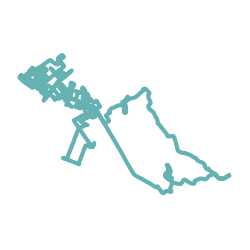 Oct 17: Afternoon Ride (18.3 new km)
Oct 17: Afternoon Ride (18.3 new km)
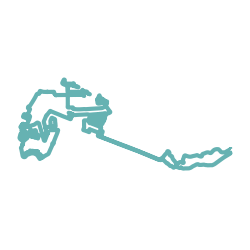 Oct 19: Afternoon Ride (22.6 new km)
Oct 19: Afternoon Ride (22.6 new km)
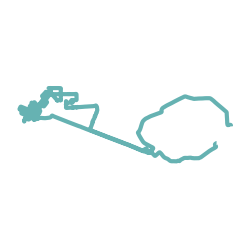 Oct 24: Afternoon Ride (8.3 new km)
Oct 24: Afternoon Ride (8.3 new km)
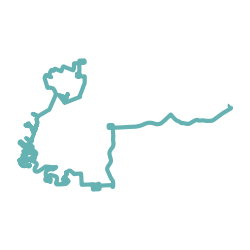 Oct 26: double flat with rescue by wif... (19.9 new km)
Oct 26: double flat with rescue by wif... (19.9 new km)
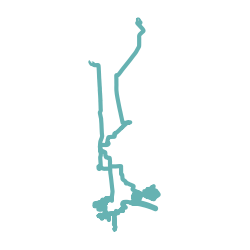 Oct 30: Lunch Ride (15.4 new km)
Oct 30: Lunch Ride (15.4 new km)
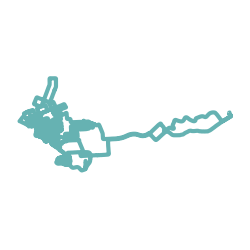 Nov 01: Concerned citizens (23.1 new km)
Nov 01: Concerned citizens (23.1 new km)
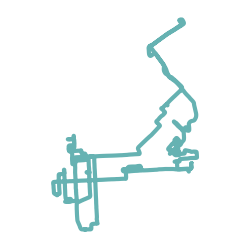 Nov 02: Bright art emerging from ruins (12.9 new km)
Nov 02: Bright art emerging from ruins (12.9 new km)
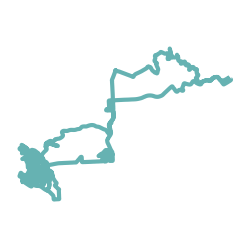 Nov 17: Lunch Ride (26.3 new km)
Nov 17: Lunch Ride (26.3 new km)
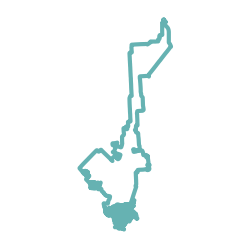 Nov 22: Midday ride through Cherry Hil... (26.0 new km)
Nov 22: Midday ride through Cherry Hil... (26.0 new km)
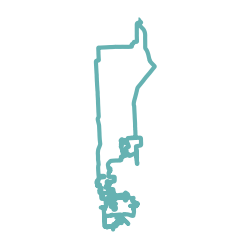 Nov 24: Lunch Ride (12.4 new km)
Nov 24: Lunch Ride (12.4 new km)
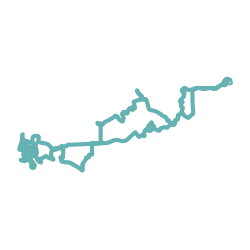 Nov 26: Cold rainy ride across the cit... (12.0 new km)
Nov 26: Cold rainy ride across the cit... (12.0 new km)
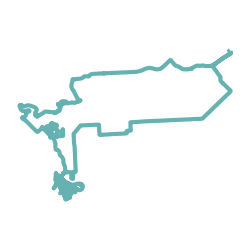 Nov 27: Let me not to the rotation of ... (17.2 new km)
Nov 27: Let me not to the rotation of ... (17.2 new km)
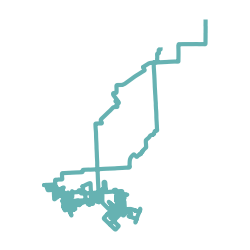 Nov 30: “get your phone, baby” (21.9 new km)
Nov 30: “get your phone, baby” (21.9 new km)
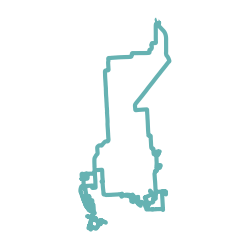 Dec 03: Around the harbor (9.9 new km)
Dec 03: Around the harbor (9.9 new km)
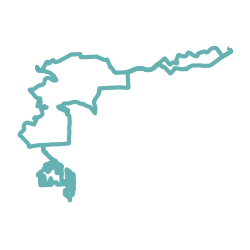 Dec 04: Freakin’ tired of Leakin (Park... (14.2 new km)
Dec 04: Freakin’ tired of Leakin (Park... (14.2 new km)
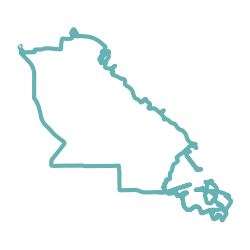 Dec 09: Herring Run in the fog (3.0 new km)
Dec 09: Herring Run in the fog (3.0 new km)
But why bike? Why not simply drive every street in the city, or purposefully seek out highlights from distant corners of the city? Partly family is older now and finding time for and getting consensus on outings is more difficult. But more than that, bikes are unique in providing speed and flexibility while maintaining intimacy. I have more to say about that.
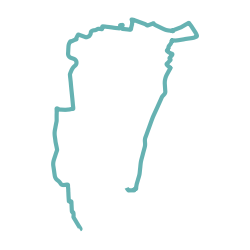 Dec 11: Errand on the way to work (12.9 new km)
Dec 11: Errand on the way to work (12.9 new km)
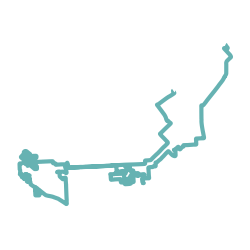 Dec 12: Getting close (13.5 new km)
Dec 12: Getting close (13.5 new km)
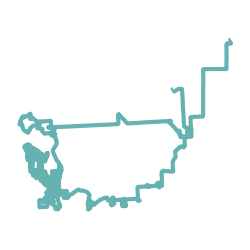 Dec 15: Morning Ride (25.8 new km)
Dec 15: Morning Ride (25.8 new km)
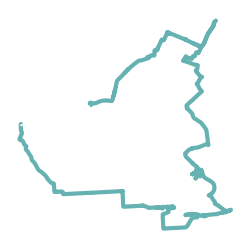 Dec 16: trails and trains (4.1 new km)
Dec 16: trails and trains (4.1 new km)
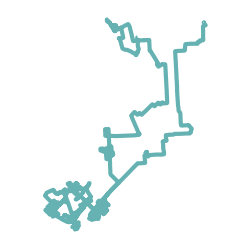 Dec 16: the industry of baltimore is i... (27.4 new km)
Dec 16: the industry of baltimore is i... (27.4 new km)
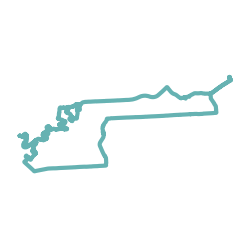 Dec 18: bikeable=no (6.1 new km)
Dec 18: bikeable=no (6.1 new km)
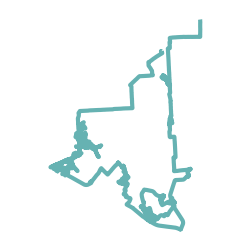 Dec 19: whew (22.8 new km)
Dec 19: whew (22.8 new km)
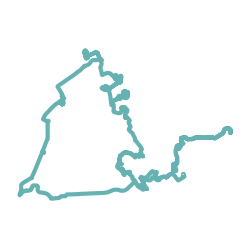 Dec 20: Hours traipsing through woods ... (7.1 new km)
Dec 20: Hours traipsing through woods ... (7.1 new km)
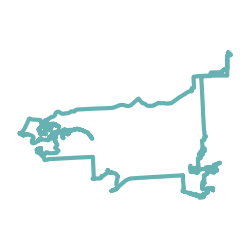 Dec 21: Complete (4.9 new km)
Dec 21: Complete (4.9 new km)